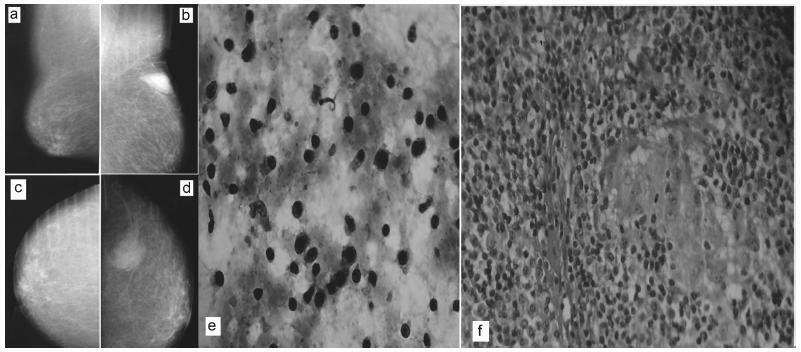-
Case Report
Fine-needle Aspiration Cytology to Identify a Rare Mimicker of Breast Cancer: Plasma Cell Mastitis
Revista Brasileira de Ginecologia e Obstetrícia. 2018;40(8):491-493
08-01-2018
Summary
Case ReportFine-needle Aspiration Cytology to Identify a Rare Mimicker of Breast Cancer: Plasma Cell Mastitis
Revista Brasileira de Ginecologia e Obstetrícia. 2018;40(8):491-493
08-01-2018Views110See moreAbstract
There are rare benign diseases that can mimic malignant breast neoplasms in the clinical exam and in mammography. We evaluated the contribution of an accessible procedure to most clinicians, the fine-needle aspiration cytology, to identify a rare mimicker of malignant breast neoplasms. A type 2 diabetic 85-year-old female presented with a 6-month history of a left breast lump. The physical exam and mammography were compatible with breast cancer. Nevertheless, after fine-needle aspiration cytology, the diagnosis was plasma cellmastitis. Once this rare diagnosis was established, the tumor was extirpated, and the final histologic diagnosis corroborated chronic plasma cellmastitis. The patient’s postoperative evolution was uneventful, and no other treatment was needed. Fine-needle aspiration cytology could be a valuable tool to identify rare mimickers of malignant breast neoplasms.

-
Trabalhos Originais
Fine needle aspiration biopsy: performance in the differential diagnosis of palpable breast masses
Revista Brasileira de Ginecologia e Obstetrícia. 1998;20(8):463-467
04-05-1998
Summary
Trabalhos OriginaisFine needle aspiration biopsy: performance in the differential diagnosis of palpable breast masses
Revista Brasileira de Ginecologia e Obstetrícia. 1998;20(8):463-467
04-05-1998DOI 10.1590/S0100-72031998000800006
Views36See morePurpose: to evaluate, in a prospective way, the performance of the fine needle aspiration biopsy in the differential diagnosis of palpable breast masses. Method: the sensitivity, specificity, positive and negative predictive values for this test were evaluated in 102 women with age above 30 years and a palpable breast mass, who were attended at the University of Campinas. All punctures were performed by the same examiner. Results: the procedure had a sensitivity of 97%, specificity of 87%, positive predictive value of 94% and negative predictive value of 93%. The insufficient or unsatisfactory sample rate was 16% for the first aspiration, decreasing to 2% with a new procedure. Conclusions: this test showed to be highly sensitive and specific for the differential diagnosis of palpable breast masses, reassuring its great importance for the clinical approach of palpable masses.


